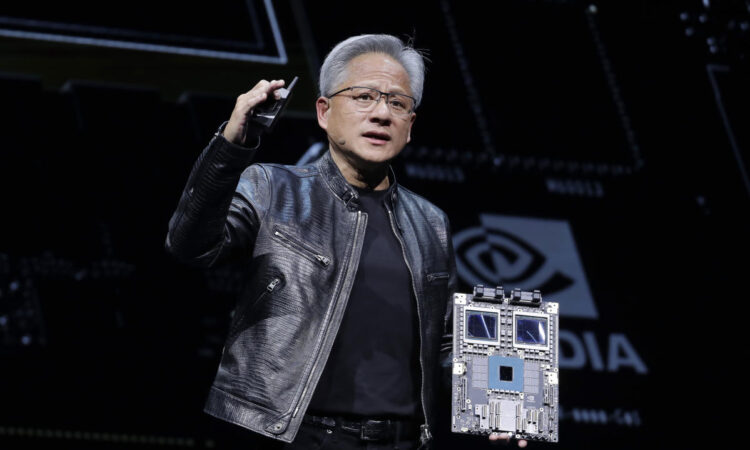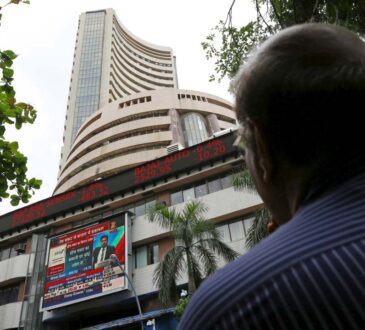
Nvidia (NVDA) shares began trading Monday on a new 10-for-1 split basis, revising the stock from its Friday closing price of $1,208.88 to $120.88. The stock slipped about 2% in early trading on Monday.
The split means that owners of Nvidia common stock held as of the close of market on Thursday received 10 shares for each one share they held. For example, if a shareholder owned four shares of Nvidia as of Thursday, they’ll now own 40 shares post-split.
Stock splits make owning shares of a stock more affordable by lowering the price of individual shares without diluting the value of existing shareholders’ total holdings.
“The stock split is going to make Nvidia a lot more reachable for a lot of these retail traders,” Option Research & Technology Services’ Matt Amberson told Yahoo Finance last Thursday. “Now, you rarely see a stock over $1,000 with a 50% implied volatility, so the prices of the options are extraordinarily high, so options traders are really looking forward to the split.”
Nvidia’s split comes after the company’s total market valuation briefly eclipsed $3 trillion on Wednesday, pushing the chip firm past Apple to become the second-most-valuable publicly traded US company.
Shares of Nvidia have skyrocketed thanks to the explosion in interest in generative AI that kicked off when OpenAI debuted its ChatGPT software in late 2022. Since then, hyperscalers like Amazon (AMZN), Google (GOOG, GOOGL), and Microsoft (MSFT) have been battling to get their hands on Nvidia’s hardware to power their own generative AI platforms.
That’s sent Nvidia’s revenue through the roof. In the first quarter, Nvidia reported adjusted earnings per share of $6.12 on revenue of $26 billion, jumps of 461% and 262%, respectively, from the same period a year ago.
Nvidia’s Data Center revenue in the most recent quarter increased 427% year over year to $22.6 billion, accounting for 86% of the company’s total revenue for the quarter. Nvidia’s gaming segment, which was previously its most important business, saw revenue of $2.6 billion.
And Nvidia continues to develop new hardware to keep customers coming back for more. On June 3, CEO Jensen Huang announced an upgraded version of its Blackwell AI platform called Blackwell Ultra is coming in 2025, as well as an entirely new platform called Rubin set for 2026. And in 2027, the company will release an Ultra version of the Rubin hardware.
Stock splits are viewed by investors as a sign of strength, and consequently companies that split their stock typically outperform the S&P 500 in the year following their announcement.
On average, stocks rise 25% in the 12 months following the announcement of their split compared to an average return of 12% from the S&P 500 in the same time frame, per analysis from Bank of America. This has been true “across market regimes,” BofA investment and ETF strategist Jared Woodard wrote in a note to clients.
Notably, the trend includes the time period from 2000 to 2009, amid the unwinding of tech bubble. Since Nvidia announced its split on May 22, shares are up about 27%.
Nvidia’s stock split comes as AMD (AMD) and Intel (INTC) are giving chase, announcing their own AI hardware and laying out their future product roadmaps as alternatives to Nvidia’s. Nvidia’s customers are also developing their own AI chips to train and run AI models to help mitigate the cost of purchasing new Nvidia products.
It’s not just hyperscalers, though. Meta (META), Tesla (TSLA), and a slew of other major tech and automotive companies are angling to grab Nvidia’s chips to train and deploy AI models for everything from recommendation engines to autonomous driving software.
What’s more, Nvidia says it has a growing total addressable market beyond tech companies, including government organizations, research institutions, and more, meaning it might have a lot more runway to go.
Email Daniel Howley at dhowley@yahoofinance.com. Follow him on Twitter at @DanielHowley.
Josh Schafer is a reporter for Yahoo Finance. Follow him on X @_joshschafer.
Click here for in-depth analysis of the latest stock market news and events moving stock prices.
Read the latest financial and business news from Yahoo Finance


